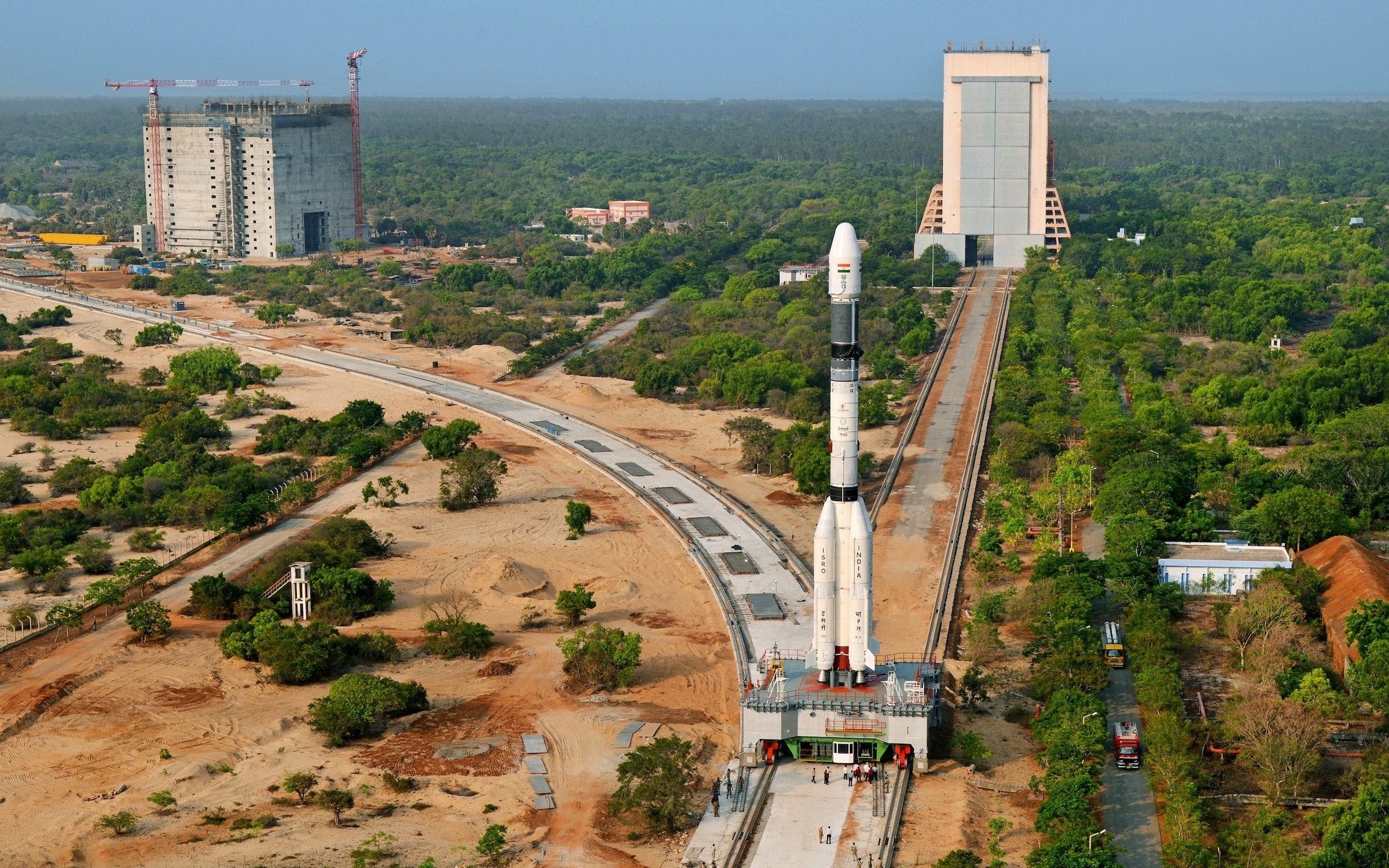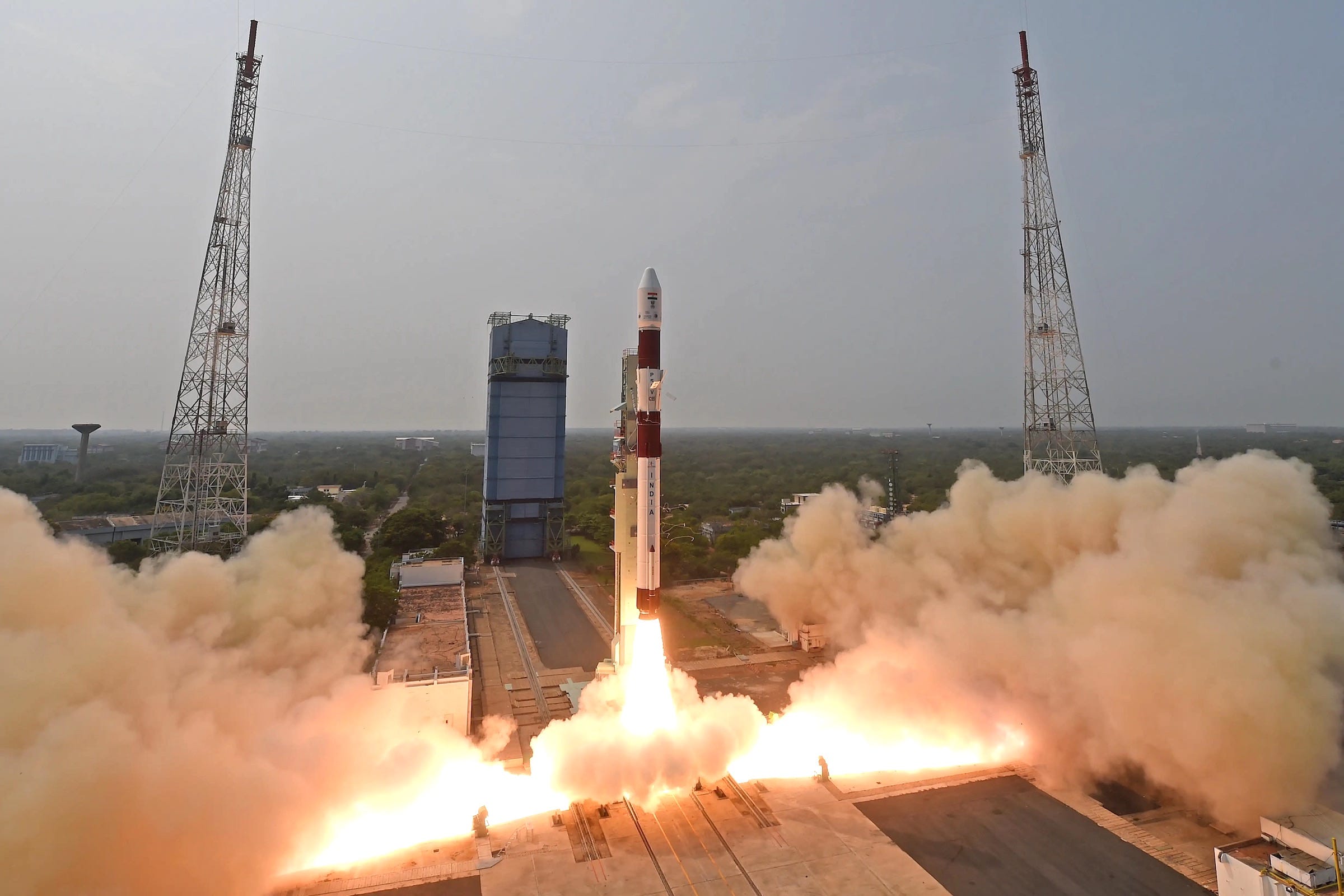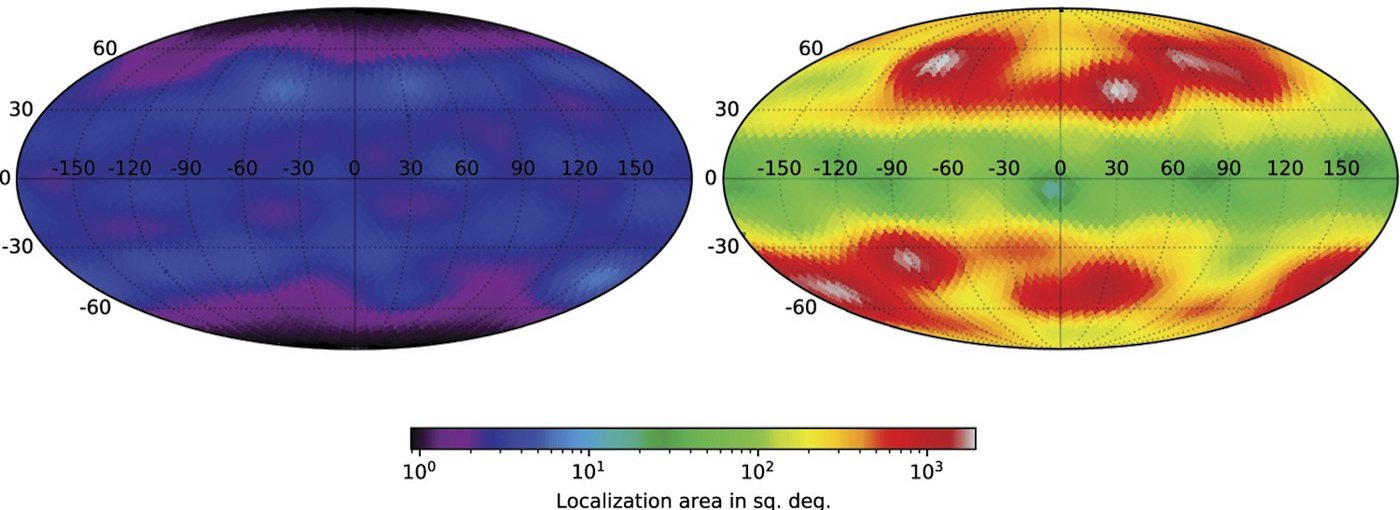Indian Space Progress #4: A new national policy, a poetic launch, a LIGO facility, and more
Indian Space Progress now has more than 4,000 subscribers! Thank you very much for reading. These monthly reports are absolutely free to access by everyone, and I never display ads. If you find value in my work, you can sponsor it as an individual or an organization. 🚀
India’s new space policy is here, and it’s a whole new world

At long last, the Government of India approved and released the country’s new space policy as of April. The brief document states for the first time some of India’s novel space ambitions, such as use of space resources. However, its chief purpose is to clarify the nature and extent of space activities that Indian private businesses are now free to pursue, in stark contrast to the traditional treatment of space as a government-channeled sector for half a century. Just like in the US, Indian private entities are now allowed and encouraged to formally, independently pursue commercial launching of rockets, operating of satellites and ground infrastructure, and broadly all else related.

Indian Space Policy (April 2023)376KB ∙ PDF fileDownloadDownload
The push for privatization
This commercial policy push is part of the ongoing space reforms to provide Indian companies with regulatory certainty, and a level-playing field against ISRO itself. India hopes to expand its space economy from its current global footprint of about 2% to at least 10% by end of decade. To that end, the largest section of revised space policy provides many much-needed clarifications on the exact role of the Indian National Space Promotion & Authorization Centre (IN-SPACe), which is a Department of Space (DOS) entity created to “promote, hand-hold, guide and authorize space activities” of private players. Two of those functions delineated for IN-SPACe stood out to me:
IN-SPACe shall work with academia to widen the space ecosystem and enable industry-academia linkages.
[…]
IN-SPACe shall identify technologies developed by ISRO that are ready for transfer to Non-Governmental Entities and facilitate the transfer of such technologies.
To that second role, the policy asks ISRO’s operations to reciprocally change:
ISRO shall transition out from the existing practice of being present in the manufacturing of operational space systems. Hereafter, mature systems shall be transferred to industries for commercial exploitation.
A new ISRO
ISRO is being further repurposed to double down on advanced space research and cutting-edge technology development. To one such end, the policy asks the country’s premier space organization to focus on expanding human spaceflight capabilities beyond the mid-decade inaugural Gaganyaan mission, which aims to make India the world’s fourth nation to indigenously send humans to space.
ISRO shall demonstrate human spaceflight capability and develop a long term road-map for sustained human presence in space. Towards this, it shall identify and develop necessary technologies, infrastructure and ecosystem.
Mine the Moon, you say?
In a complete 180, India’s new space policy now explicitly states and encourages extraction and utilization of space resources.
Non-Governmental Entities shall engage in the commercial recovery of an asteroid resource or a space resource. Any NGE engaged in such process shall be entitled to possess, own, transport, use, and sell any such asteroid resource or space resource obtained in accordance with applicable law, including the international obligations of India.
In fact, ISRO is being encouraged to specifically carry out missions to said end.
ISRO shall undertake studies and missions on in-situ resource utilization, celestial prospecting and other aspects of extra-terrestrial habitability.
The phrasing “commercial recovery of an asteroid resource or a space resource” is interesting because it includes the Moon without mentioning it. You see, India is a signatory of the 1979 Moon Treaty, which has strict and even highly idealistic non-sovereignty underpinnings. Being seen at odds with the Moon Treaty with such a policy direction could become an overnight concern with one misstep.
None of the indigenously crewed spacefaring nations of the US, China, and Russia have signed the Moon Treaty, and don’t plan to. The US-led Artemis Accords also controversially intends to set precedence for local resource extraction on the Moon. There is international concern that the Accords ultimately might—but doesn’t yet—put its signatories in objection of the 1967 Outer Space Treaty, which India has also signed. The US and three other signees of the Accords—Japan, Luxembourg, and UAE—have passed national bills to allow their private companies to extract space resources and use or sell them.
While India’s space policy is yet to morph into a bill, there’s little doubt that India taking a stance similar to the Accords doesn’t gel along with its commitment to The Moon Treaty. And so, will India withdraw from The Moon Treaty just like Saudi Arabia did? Between the new policy and growing Indian-US space relations, the chances of India signing the Artemis Accords are certainly higher now.
More problems and next steps
There are several blind spots in India’s revised space policy, which need to be clarified or addressed as the document goes through refinements and additions before culminating into a much-awaited space activities bill.
For one, the policy makes no mention of allowing foreign direct investments (FDI) in Indian space companies. However, in an April statement to the Rajya Sabha—which is roughly the Indian equivalent to the US Senate—lead DOS Minister Jitendra Singh said opening up of FDI for the space sector without government involvement is being worked on as part of a revised policy.
IN-SPACe’s role as both a promoter and regulator of private space activities remains perplexing. Also, there are still uncertainties regarding the nature of IN-SPACe’s establishment as being under DOS. The policy states that IN-SPACe will be an autonomous body but as Pranav Satyanath writes, it’s unclear how it will be achieved:
For IN-SPACe to carry out its regulatory activities, it must be given the legal powers by Parliament. Consider for example the establishment of TRAI under the Telecom Regulatory Authority of India Act, 1997. The Act established the powers of TRAI and set firm the structure of the agency. No such law exists behind the establishment of IN-SPACe.
In a NewSpace India podcast episode, Narayan Prasad of SatSearch and Aditya Ramanathan of the Takshashila Institution (an Indian Space Progress sponsor) discuss many finer aspects present as well as missing in the revised policy.
Last but far from the least, having DOS as the nodal agency implementing India’s new space policy, and one essentially having final say in ambiguous matters and disputes, seems to a core structural problem. The DOS Secretary and the ISRO Chief are the same person, at least as things stand currently. Ensuring a level playing field for all Indian space players is going to take some more work.
ISRO launches a POEM on a PSLV

On April 22, an ISRO PSLV rocket launched and deployed Singapore’s in-house TeLEOS-2 synthetic aperture radar satellite into its intended 586-kilometer circular orbit. The rocket also deployed the LUMELITE-4 smallsat, a Singaporian maritime-related technology demonstrator. Singapore’s first Earth observation satellite, TeLEOS-1, was also launched on a PSLV in 2015.
This 57th flight of the rocket was a dedicated commercial lift for TeLEOS-2 negotiated by New Space India Limited (NSIL), a government-owned company commercializing Indian space technologies.
The POEM continues
The launch is the third time ISRO uniquely repurposed the PSLV’s fourth stage as a stabilized, solar-powered platform for onboard payloads. This affords organizations low-cost access to space for demonstrating their technologies ahead of use in future missions. ISRO calls the platform the PSLV Orbital Experimental Module, or POEM.
On this launch, POEM is home to seven payloads from various organizations, notably including an ionospheric analyzer, a privately developed Hall-effect thruster, and a novel low-cost star sensor. In a post-launch briefing, ISRO said this POEM is the first to sport deployable solar panels, which increases its power generation capacity from 150 watts to 500.
Meet Starberry-Sense
A 470-gram star sensor hosted on POEM called Starberry-Sense hopes to help future CubeSats determine their orientation in space at 10 times lower cost. Led by researchers at the Indian Institute of Astrophysics, the module is powered by a Raspberry Pi Zero computer. For this demonstration mission, Starberry-Sense is expected to work in Earth orbit for three to six months, and initial data shows it’s performing well. A modified Starberry-Sense will be utilized in the Indian Astronomical Observatory at Ladakh.
Produce more PSLVs
The PSLV has now launched 350 satellites for 36 countries. This particular PSLV was integrated at ISRO’s new namesake facility near the first of the two launch pads at Sriharikota. The PSLV Integration Facility cuts down assembly time by several weeks, enabling ISRO to launch a PSLV a month now. In parallel, ISRO and NSIL are working on increasing PSLV’s production rate by having them fully industry-built as part of a $104 million contract awarded to a consortium of major PSLV contractors.
Many thanks to the Takshashila Institution and SkyServe for sponsoring this month’s Indian Space Progress report.
Upcoming mission updates

ISRO’s NVS-01 satellite, which is a replacement spacecraft for the Navigation with Indian Constellation (NAVIC) system, will launch on a GSLV Mk II rocket end of May, possibly on May 24. NAVIC is India’s regional GPS-like service.
In a press conference held after the aforementioned PSLV launch, ISRO provided target launch timeframes for some upcoming missions. No dates, as is usual for the agency, but it’s something:
The Chandrayaan 3 Moon lander and the Aditya-L1 solar observatory will each be launched by July on a GSLV Mk III and PSLV rocket respectively.
As ISRO works towards the ambitious inaugural Gaganyaan mission, it will conduct in June a milestone, in-flight capsule abort test called TV-D1 at a 14-kilometer altitude.
The X-ray Polarimetry Satellite, or XPoSat, will launch on a PSLV rocket later this year. The space telescope was previously supposed to launch on an SSLV.
ISRO and NASA successfully tested data flow between the Chandrayaan 3 lunar lander and the US Deep Space Network (DSN). This is part of a February 2022 agreement to have DSN support communications for the mission. ESA’s Estrack network will also provide backup communications, as part of a broader mutual support agreement with the Indian space agency. ISRO uses its own Indian Deep Space Network as a primary means for communicating with its planetary spacecraft but partners with other space agencies for backup and auxiliary options. India’s Chandrayaan 1 and 2 orbiters as well as Mangalyaan have had DSN support too. Aside: ISRO is collaborating with the Moon Village Association for public outreach of Chandrayaan 3.
India to join the quest to detect gravitational waves
In a big step forward for Astrophysics as well as Indian science, the Indian government approved on April 6 the construction of a $320 million gravitational wave detection facility. Called LIGO-India, it will feature a refined design of the twin Laser Interferometer Gravitational-Wave Observatory (LIGO) facilities in the US, which detected the first gravitational waves from colliding black holes in 2015. LIGO-India is a collaboration between the LIGO Laboratory and several Indian research institutes, and is expected to begin observations end of decade.
LIGO-India will join the two LIGO detectors in the US, Virgo in Italy, and KAGRA in Japan in the quest to detect ripples in spacetime caused by cataclysmic cosmic events. The LIGO project is helping us better understand how black holes form, where the heavy elements of our cosmos come from, and the rate at which our Universe is expanding. Scientists expect LIGO-India’s addition to provide at least a tenfold improvement in the network’s ability to locate the sources of detected gravitational wave events. LIGO-India’s location will also help cover greater portions of the sky.
This is a big moment for Indian science, especially because while the country has considerable contributions to cutting-edge fundamental physics experiments such as at the Large Hadron Collider, India hasn’t yet built a state-of-the-art scientific facility of this scale in its home turf.

More Indian Space
- With seven maneuvers, ISRO safely disposed off its GSAT-12 communications satellite on March 23 in a graveyard orbital belt, roughly 400 kilometers above geostationary earth orbit. The satellite was launched in 2011.
- To increase the talent pool in fundamental space research, ISRO has launched a new online training program called “Space Science and Technology Awareness Training” (START) for post-graduate and final-year undergraduate students of physical sciences and technology. As part of the program, scientists from Indian academia and ISRO centers will teach space sciences, instrumentation, and aeronomy.
